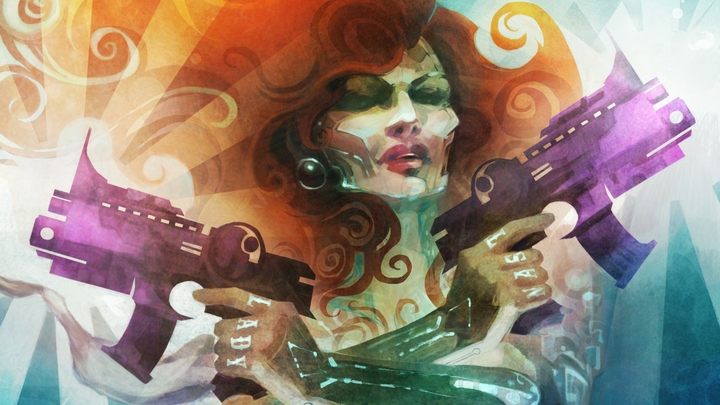The Strategy Behind Disabled Stories: The What, Why, and How (but Mostly How) of Disabled People Destroy Science Fiction
When I started writing this article my face was spotted with burst blood cells. Earlier in the day I’d had one of my violent convulsive episodes. I was exhausted and aching but I meant to write, because it felt appropriate, topical. I’m here, after all, to write about Uncanny Magazine’s Disabled People Destroy Science Fiction issue.
But I couldn’t muster the energy for more than a few lines. I lacked the spoons.
The project description goes like this: Disabled People Destroy Science Fiction is a continuation of the Destroy series in which we, disabled members of the science fiction community, will put ourselves where we belong: at the center of the story. Often, disabled people are an afterthought, a punchline, or simply forgotten in the face of new horizons, scientific discovery, or magical invention. We intend to destroy ableism and bring forth voices, narratives, and truths most important to disabled writers, editors, and creators with this special issue.
My colleagues will have guest posts and blog posts going up across a number of venues, and many of them will focus on the importance of representation, of disabled people placing ourselves at the centre of the narrative, of telling our own stories. For my part, I want to discuss the creative process for our project.
Disabled People Destroy Science Fiction isn’t just about showcasing disabled characters, but disabled creators. Just on the editorial side, working with a group of people with chronic pain, chronic fatigue, depression, anxiety, etc. involves its own challenges. Like how I had my convulsive episode. I certainly intended to participate in email discussions with my colleagues that day, to help with Kickstarter prep and brainstorm blog posts, but my condition made that impossible. On another day it will be one of my colleagues who is unavailable. While there is no one universal disability narrative, these sort of disruptions are common for many disabled artists. A story may be due or an email may need answering, and it isn’t always possible. For people unused to these scenarios, it can be frustrating, particularly if they are unfamiliar with the disabled person’s situation, or if they are not especially empathetic. One of the benefits of working with a staff of disabled people is that we know these truths, we understand them and are used to navigating them. Several of us have only recently met, but we already provide support for one another because we know the challenges we face, even though our respective experiences differ. Being visible about such things is, to me, important because it is part of the wider creative process for disabled people.
How we tell our stories can sometimes be as important as the stories themselves. The essays and interviews my colleagues will publish throughout the Kickstarter and in the issue will provide the perspective of a wide range of disabled artists, each addressing a number of intersections of disability. The discussions that will follow across social media as a result will also be valuable. For example, in the writing community there is tremendous pressure to adopt specific methods for the creative process. Commandments such as “Thou shalt write a minimum of 500 words a day” are typical. Sometimes it’s 1000 or 2000. “Do that and you will know success.” That isn’t possible for everyone. The prevalence of that approach can discourage disabled artists from pursuing their craft for fear of doing it “wrong.” Juxtaposing such conversations with the actual published work is crucial to destroying those notions of a one true path.
To me, projects like Disabled People Destroy Science Fiction matter because in addition to showcasing our stories they can help foster a sense of community amongst disabled artists and readers. Such communities are invaluable for under-represented groups. In the coming weeks and in the issue itself readers may learn that someone they’ve been reading for years is disabled, and that perhaps that author/poet/editor/artist experiences something very similar to what they experience themselves. They can learn how it has perhaps impacted the work in unexpected ways. Some readers or writers may discover resources that prove invaluable to their craft, or even to some of the daily challenges they face in their creative pursuits.
In the end, it creates a venue where we disabled people can tell not just our stories, but discuss why we tell those stories, and how.
Dominik Parisien is the co-editor (with Navah Wolfe) of The Starlit Wood: New Fairy Tales, published by Saga Press on October 18, 2016. His last article for Black Gate was Go Ahead. Judge The Starlit Wood by its Cover.

[…] (3) INSIDE LOOK. Dominic Parisien tells Black Gate readers “The Strategy Behind Disabled Stories: The What, Why, and How (but Mostly How) of Disabled People …. […]
[…] I wrote an essay for Black Gate about the strategy behind the Destroy project, focusing on HOW we proceed and […]
[…] I Built My Own Godd*mn Castle. Fiction editor Dominik Parisien is over at Black Gate discussing the importance of the anthology for disabled creators. And there is a raft of great essays edited by Nicolette Barischoff in the updates section of the […]